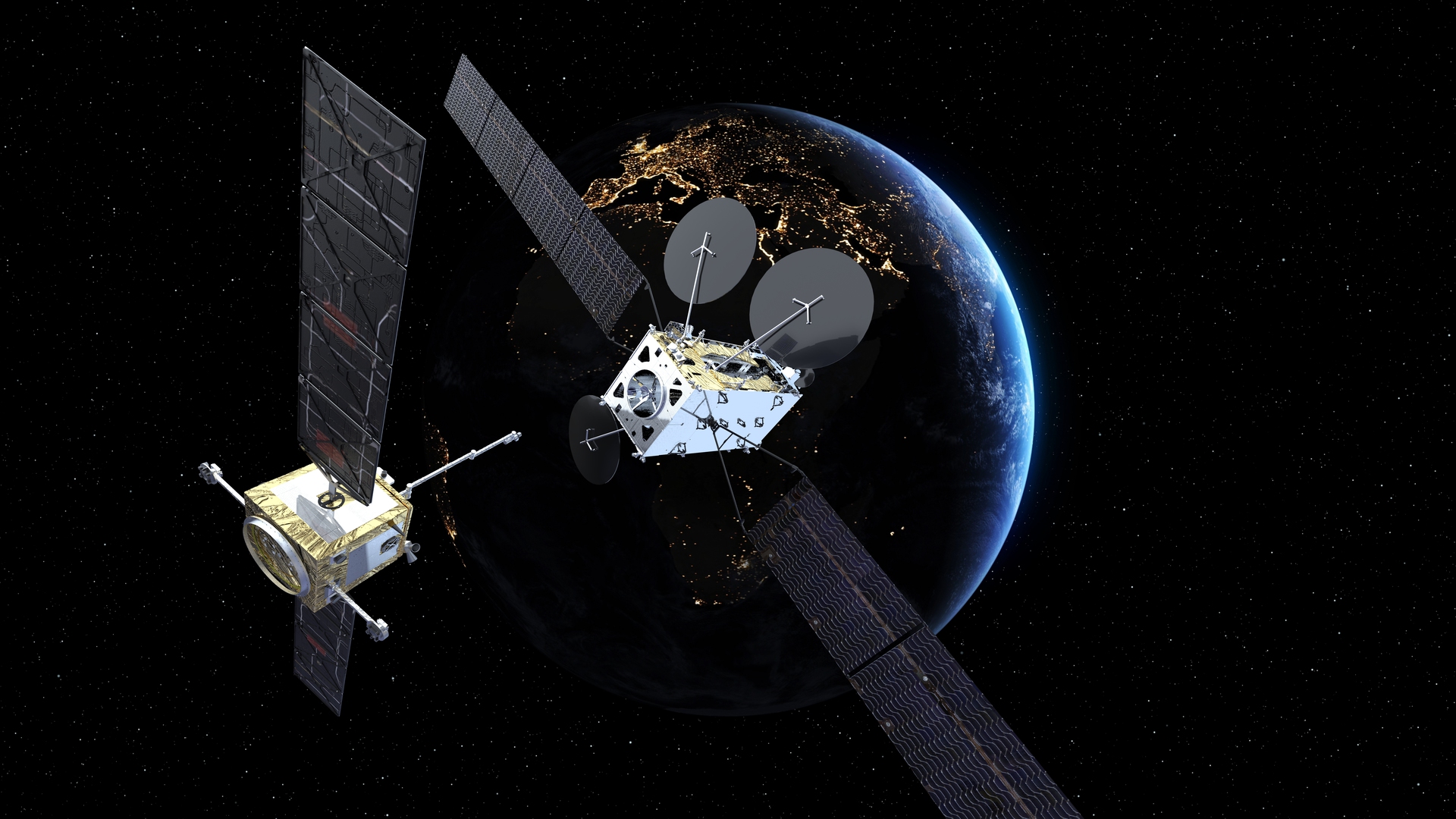TAMPA, Fla. — France has awarded a Thales Alenia Space-led group a contract to capture and inspect a small satellite in a demonstration mission slated toward the end of the decade.
Supported by undisclosed funding from French space agency CNES and state-owned investment bank Bpifrance, the mission would use a pair of spacecraft due to launch before the end of 2028 as part of the European Robotic Orbital Support Services (EROSS) program.
EROSS, which has received funding from the European Commission, aims to test rendezvous and servicing capabilities in low Earth orbit with a one-cubic-meter-sized client satellite and a servicer about three times as big with a robotic arm.
Some EROSS demonstrations, which include inspection, attitude control takeover, refueling and the assembly/exchange of payloads, would be performed after the robotic arm grabs a part of the client satellite that was not specifically designed for an on-orbit servicer.
Unlike EROSS, Thales Alenia Space project manager Stéphanie Behar-Lafenêtre said its mission would take place after the client satellite is put into a spin to represent a target that has lost attitude and orbit control.
The DIANE mission, or Démonstration d’Inspection et Amarrage Novatrice Embarquée, would also use the client satellite’s “unprepared” configuration.
“In the DIANE contract, the servicer uses its cameras (both on the platform and on the robotic arm) to perform a close-range inspection of the satellite,” Behar-Lafenêtre said via email July 19.
“In operational conditions, the servicer can be used to, in addition to inspection, slow down the spinning of the satellite and move it towards a more appropriate location. This prefigures active debris removal. Debris being, here, old spacecraft.”
He said the EROSS servicer currently under development would need a software update to handle a spinning target, which could be uploaded on the ground or while the spacecraft is in orbit.
“It is the objective of the first few months of the project to make this kind of decisions,” he said.
The timeline for DIANE depends on the availability of the EROSS assets, he added, but in principle the mission could start as soon as the initial EROSS demonstration is over.
The French division of Thales Alenia Space, a joint venture between Thales of France and Leonardo of Italy, is responsible for DIANE’s overall mission. French engineering firm Magellium Artal Group is providing the image processing capabilities needed for vision-based position determination and local inspection.
German aerospace research agency DLR is developing the robotic arm. The French unit of European space mission integrator Telespazio is tasked with organizing a customer service offering, including the creation of a processing and visualization center for inspection data.
Behar-Lafenêtre said consortium members are still deciding whether to launch the servicer and client spacecraft on the same rocket or separately.
The demonstrations should last three to four months, he said, followed by around five years of operational service for the robotic spacecraft.
Related
Read the original article here
